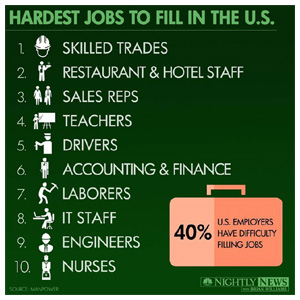Signpost for the Future of Construction [VIDEO]
Occasionally we take a look out to the horizon to satisfy our curiosity about what might be headed our way and what might be a major disruptor to the construction business as we do it today. We have introduced you to BIM, robots on the job, driverless dump trucks, driverless cars, driverless concrete trucks, drones of all kinds and more recently 3D printing. [node:read-more:link]


 We have
We have  Our friends at
Our friends at  Mine is Taller than Yours. Why? Beats me!
Mine is Taller than Yours. Why? Beats me! “A global jobs war is coming and there is no time to waste. Cities are crumbling for lack of good jobs. Nations are in revolt because their people can’t get good jobs. The cities and countries that act first—that focus everything they have on creating good jobs—are the ones that will win.” - Jim Clifton, Chairman of Gallup and author of
“A global jobs war is coming and there is no time to waste. Cities are crumbling for lack of good jobs. Nations are in revolt because their people can’t get good jobs. The cities and countries that act first—that focus everything they have on creating good jobs—are the ones that will win.” - Jim Clifton, Chairman of Gallup and author of 
 This week of June 2-6 has been designated National Fall Prevention Safety Stand-Down week by OSHA to help prevent injuries and deaths due to falls on the job.
This week of June 2-6 has been designated National Fall Prevention Safety Stand-Down week by OSHA to help prevent injuries and deaths due to falls on the job. The Associated General Contractors of America is working through its local chapters to find ways to address the catch-22 of older workers retiring while fewer graduating students are entering the industry.
The Associated General Contractors of America is working through its local chapters to find ways to address the catch-22 of older workers retiring while fewer graduating students are entering the industry. 